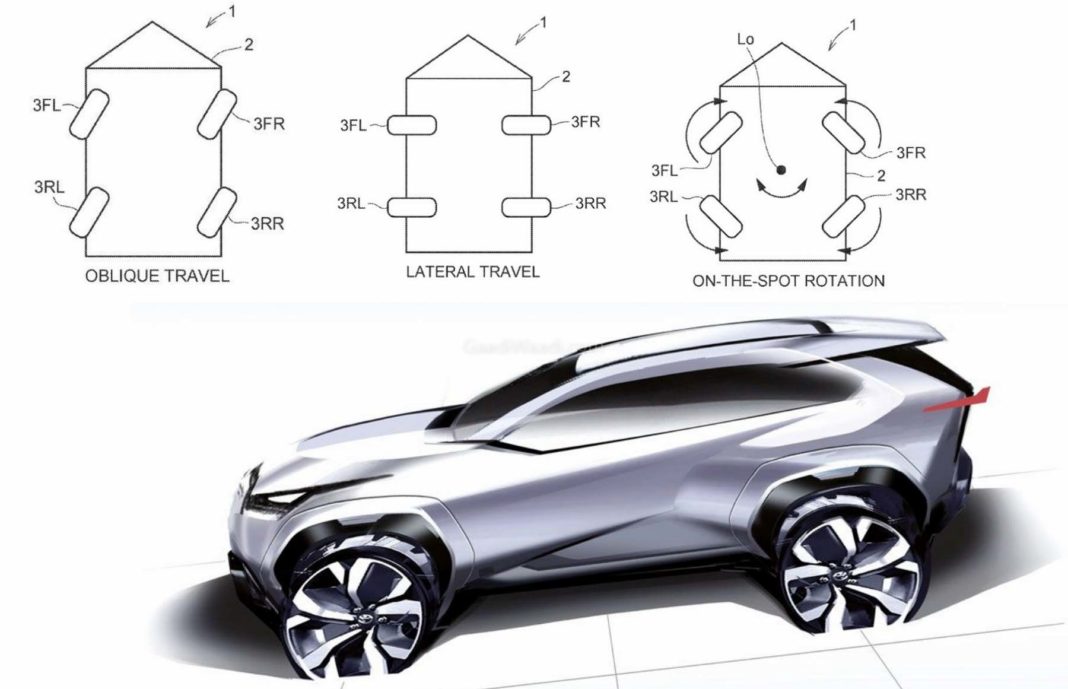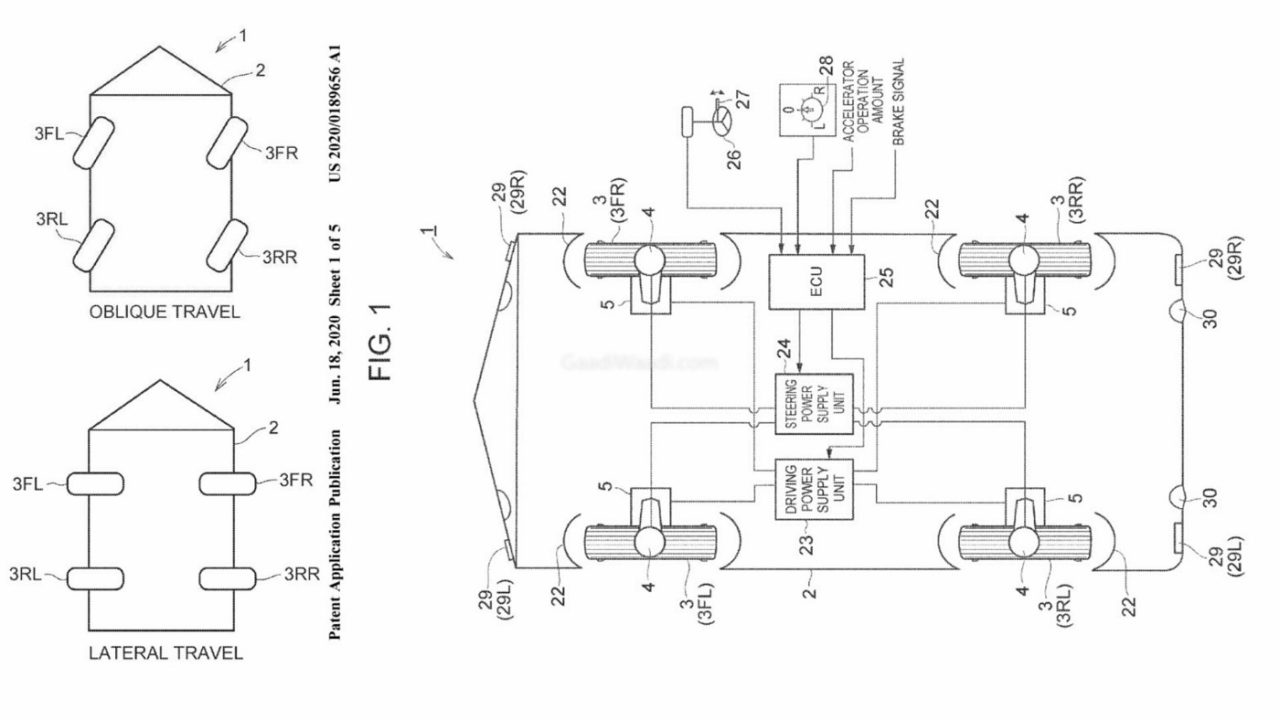
Toyota has applied patent for sideways movement of all four wheels while capable of different movement angles for the ease of parking
Toyota has constantly been investing in future technologies as well as electrification related research and developments, as it is a leading global car manufacturer. The mainstream automakers are having their work cut out following the global economic downfall due to the health crisis and resilience will distance some apart from others (no pun intended) into the near future.
The transition from the world of IC-engined cars to zero-emission mobility solutions is well and truly on but the companies are facing hinderances along the way courtesy of different market conditions. Thus, anybody coming up with a breakthrough technology will have the upper hand and it has prompted the cash cows to invest heavily on promising start-ups.
The rise of Tesla to fame in recent years despite the worldly struggles faced by Elon Musk has proven that customers are looking ahead into the future. With a domineering presence in global marketplaces, Toyota never retreats from banking in on new technology and recently, it has applied for a patent with the USPTO (the United States Patent and Trademark Office).
It is one of the interesting patents we have seen in recent memory but the one that was expected to be commercialized widely even last decade. Sliding sideways into a parallel parking space reduces the hassle of having to turn multiple times into a short space. While advancements in assistive technologies have resulted in autonomous parking capabilities, the accessibility is not for everyone.
Toyota’s patent has all the four wheels turning in a lateral fashion allowing for movement sideways. The wheels can also rotate to ensure zero turning radius or even diagonal movements. The images of the patent explain how each wheel is moved to a structure to allow for a wide-angle of rotation as in the castor wheels on the office chair.
Each wheel has its own hub motor staying inside the body of the vehicle and thus 360-degree turns could be limited. The patent shows how turn signals can be utilized for new movement angles as well.

